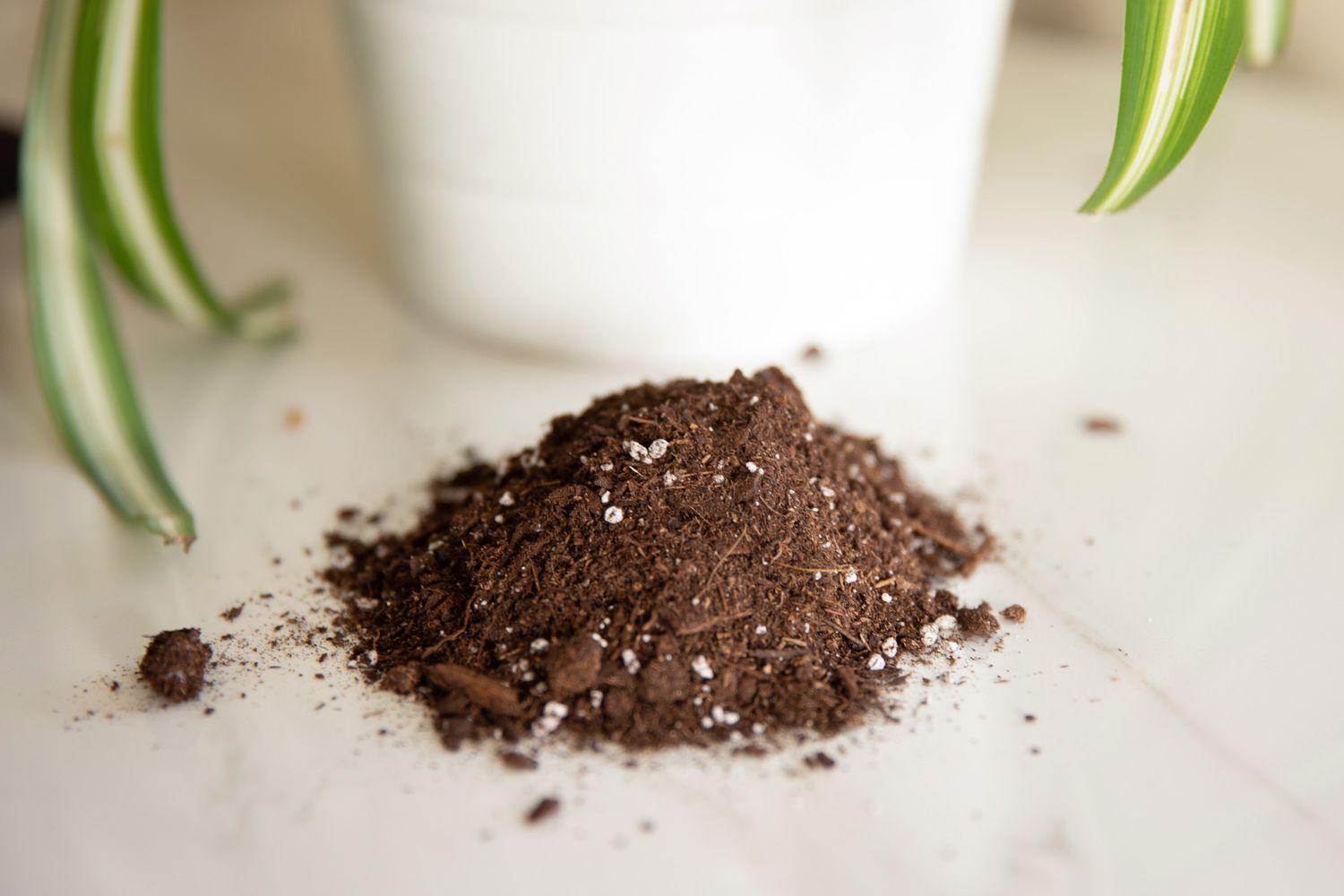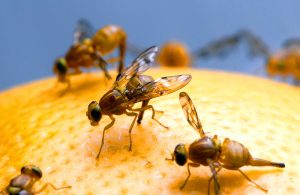Recognizing the Signs of Mold on Plant Soil
Mold growth on plant soil can be a common issue for indoor and outdoor gardeners alike. Identifying the signs of mold early on is crucial to prevent further damage to your plants and soil. Here are some key indicators to look out for:
- Visible growth: One of the most apparent signs of mold on plant soil is the presence of visible growth. This can be in the form of fuzzy patches, powdery substances, or slimy coatings.
- Unpleasant odor: Mold often produces a distinct musty or earthy odor. If you notice a foul smell coming from your plant soil, it could be an indication of mold growth.
- Discolored soil: Mold can cause discoloration on the surface of the soil. Look out for patches of green, black, or white, which may indicate the presence of mold.
- Deterioration of plant health: Mold can have detrimental effects on plant health. If you notice wilting, stunted growth, or yellowing leaves despite proper care, mold could be the culprit.
- Insects or pests: Mold-infested soil can attract insects or pests. Keep an eye out for any crawling creatures or signs of infestation near your plants.
It’s important to note that mold on plant soil can vary in appearance and characteristics. If you notice any unusual changes or suspect mold growth, it’s best to address the issue promptly to prevent further damage and potential spread to other plants.
Removing Mold from Plant Soil
If you’ve identified mold on your plant soil, it’s essential to take immediate action to remove it and prevent its recurrence. Here are some effective methods to eliminate mold from plant soil:
- 1. Manual Removal: For small areas affected by mold, you can manually remove the mold with a spoon or a small garden trowel. Gently scrape off the moldy soil and dispose of it in a sealed bag.
- 2. Repotting: If the mold infestation is severe or widespread, consider repotting your plant. Carefully remove the plant from the affected soil, remove as much of the moldy soil as possible, and repot it in fresh, sterile soil.
- 3. Soil Sterilization: To kill off any remaining mold spores, you can sterilize the soil. Bake it in an oven at 180°F (82°C) for about 30 minutes. Let the soil cool before using it for repotting or reusing.
- 4. Sun Exposure: Mold thrives in damp conditions, so allowing the soil to dry out can help eliminate mold. Move the affected plant to an area with good airflow and plenty of sunlight, and avoid overwatering until the mold is completely gone.
- 5. Use Hydrogen Peroxide: Mix one part hydrogen peroxide with four parts water and water the plant with this solution. Hydrogen peroxide helps kill mold and disinfect the soil. However, use this method sparingly, as excessive use can harm beneficial microorganisms in the soil.
Remember to monitor your plants closely after removing the mold. Maintain proper watering practices, adequate sunlight, and good airflow to prevent the conditions that favor mold growth. Regularly inspect the soil and take immediate action if you notice any signs of mold reemerging.
Creating a Balanced Plant Environment to Prevent Mold
Preventing mold on plant soil is key to maintaining healthy and thriving plants. By creating a balanced plant environment, you can significantly reduce the risk of mold growth. Here are some proactive measures you can take:
- Adequate Air Circulation: Proper airflow around your plants is crucial in preventing excess moisture buildup, which can contribute to mold growth. Ensure that there is enough space between plants and consider using fans or open windows to improve air circulation.
- Proper Plant Spacing: Avoid overcrowding plants, as this can limit airflow and trap moisture, creating favorable conditions for mold. Give each plant enough space to promote healthy growth and minimize the risk of mold infestation.
- Well-Draining Soil: Ensure that the soil you use is well-draining to prevent water from pooling and becoming a breeding ground for mold. Use quality potting mixes or amend your garden soil with organic matter to improve drainage.
- Watering Wisely: Proper watering techniques are crucial in preventing mold. Avoid overwatering, as this can create excessively damp conditions. Water your plants at the base and avoid wetting the leaves or allowing water to collect in saucers.
- Monitor Humidity Levels: Mold thrives in high humidity environments. Indoor gardeners can use a hygrometer to monitor humidity levels and maintain them between 40-60%. Consider using a dehumidifier if necessary to reduce excess moisture.
- Regular Plant Maintenance: Keep your plants healthy and free from stress by regularly removing dead leaves, pruning, and providing proper nutrition. Healthy plants are more resistant to mold and other diseases.
By implementing these preventive measures, you can create an environment that is less favorable for mold growth. Regularly assess and adjust your plant care routine based on the specific needs of your plants and environmental conditions to maintain a balanced and mold-free plant environment.
Adjusting Watering Habits to Prevent Mold Growth
Proper watering is crucial not only for the overall health of your plants but also for preventing mold growth on plant soil. Here are some tips to adjust your watering habits and minimize the risk of mold:
- Water Only When Necessary: Avoid overwatering your plants, as excessive moisture in the soil creates an ideal environment for mold growth. Instead, water your plants only when the top inch of soil feels dry to the touch.
- Water Deeply and Infrequently: Rather than frequent light watering, it’s best to water your plants deeply and less often. This encourages the development of deeper, healthier roots and reduces the likelihood of moisture retention in the soil.
- Use the Right Watering Technique: When watering your plants, aim to water the soil directly at the base of the plant. Avoid wetting the leaves, as this can promote the growth of mold and other fungal diseases.
- Ensure Proper Drainage: Ensure that the pots or containers your plants are in have drainage holes to allow excess water to escape. This prevents water from accumulating in the soil and promotes faster drying.
- Avoid Waterlogged Soil: Waterlogged soil is a haven for mold. If you notice water pooling on the surface of the soil or in the saucer beneath the pot, carefully tip out the excess water to prevent mold growth.
- Consider Time of Day: Water your plants in the morning when the temperature is cooler. This allows the foliage and soil to dry out during the day, reducing the risk of mold growth caused by prolonged moisture.
- Use a Moisture Meter: A moisture meter can be a handy tool to gauge the moisture level of the soil. This helps you avoid guesswork and ensures that you’re watering your plants appropriately.
By adjusting your watering habits and maintaining proper moisture levels, you can create an environment that is less conducive to mold growth. Remember to monitor your plants closely and make adjustments as needed based on the specific needs of each plant and environmental conditions.
Using Natural Remedies to Get Rid of Mold on Plant Soil
When dealing with mold on plant soil, you may prefer to use natural remedies to address the issue. Here are some effective natural methods to get rid of mold:
- Cinnamon: Sprinkle a generous amount of ground cinnamon on the affected soil. Cinnamon has antifungal properties that can help control the growth of mold.
- Vinegar: Mix one part white vinegar with three parts water and spray the solution onto the moldy soil. Vinegar is known for its antimicrobial properties and can help eradicate mold.
- Neem Oil: Dilute neem oil with water according to the package instructions and spray it on the soil. Neem oil is a natural fungicide that can effectively combat mold growth.
- Hydrogen Peroxide: Mix three percent hydrogen peroxide with water in a ratio of 1:2 and water the affected soil with the solution. Hydrogen peroxide can kill mold spores and disinfect the soil.
- Baking Soda: Mix a tablespoon of baking soda in a gallon of water and drench the soil with the solution. Baking soda helps regulate the pH of the soil and inhibits mold growth.
- Grapefruit Seed Extract: Dilute grapefruit seed extract with water according to the package instructions and spray it on the affected soil. Grapefruit seed extract has antifungal properties that can help eliminate mold.
It’s important to note that natural remedies may require repeated applications and may not provide instant results. Additionally, some natural remedies can affect the pH balance of the soil, so it’s advisable to monitor the health of your plants and adjust as necessary.
Using natural remedies not only helps eliminate mold but also minimizes the use of synthetic chemicals, making it a safer option for the environment and your plants. However, if the mold infestation persists or worsens, consider seeking professional advice or using commercial fungicides.
Using Commercial Fungicides to Treat Mold on Plant Soil
If natural remedies have not effectively treated the mold on your plant soil, or if the infestation is severe, using commercial fungicides can be an option to consider. Commercial fungicides contain specific ingredients designed to eradicate mold and other fungal diseases. Here’s what you need to know:
- Choose the Right Fungicide: Select a fungicide specifically formulated for treating mold or soil-borne diseases in plants. Read the product label carefully to ensure it is safe for your particular plant species.
- Follow the Instructions: Always follow the manufacturer’s instructions for proper application and dosage. Applying too much or too often can harm your plants and the surrounding environment.
- Protect Yourself: When using commercial fungicides, it’s important to wear protective gear such as gloves, goggles, and a mask to avoid contact with the chemicals and minimize inhalation.
- Targeted Application: Apply the fungicide directly to the affected soil, focusing on the areas with visible mold growth. Avoid spraying the leaves or stems of the plant unless instructed to do so.
- Monitor Plant Health: After applying the fungicide, closely observe your plants for any adverse reactions. Look out for signs of stress or discoloration and adjust the treatment accordingly.
- Reapplication if Necessary: Depending on the severity of the mold infestation, you may need to repeat the application of the fungicide as directed on the product label. This ensures complete eradication of the mold and prevents its resurgence.
While commercial fungicides can be effective in treating mold on plant soil, it’s important to exercise caution and use them as a last resort. It’s always best to identify and address the underlying factors contributing to mold growth, such as excess moisture or poor airflow, to prevent future infestations.
If you have concerns about using commercial fungicides, consult with a professional or seek advice from your local nursery or garden center. They can guide you in choosing the most suitable fungicide for your plants and provide additional tips for effective mold control.
Taking Preventive Measures to Avoid Mold Growth on Plant Soil
Prevention is key when it comes to avoiding mold growth on plant soil. By implementing a few simple measures, you can significantly reduce the risk of mold infestation and maintain a healthy garden. Here are some preventive measures you can take:
- Maintain Proper Air Circulation: Good airflow is essential for preventing excess moisture buildup, which can lead to mold growth. Space out your plants appropriately and consider using fans or opening windows to improve air circulation.
- Practice Proper Watering Techniques: Overwatering is a common cause of mold. Water your plants when the top inch of soil feels dry to the touch, and avoid leaving them sitting in excess water. Allow the soil to dry out slightly between waterings.
- Use Well-Draining Soil: Ensure that the soil you use is well-draining to prevent water from accumulating and creating a conducive environment for mold. Use quality potting mixes or amend your garden soil with organic matter to improve drainage.
- Regularly Inspect Plants: Regularly inspect your plants for any signs of mold growth or other diseases. Catching early indications allows you to take immediate action and prevent the spread to other plants.
- Ensure Proper Plant Spacing: Avoid overcrowding plants, as it restricts airflow and can create a humid microclimate conducive to mold growth. Give each plant enough space to grow and thrive.
- Keep Foliage Dry: Water plants at the base, avoiding wetting the leaves. Damp leaves can promote mold growth, so water early in the day to allow time for the foliage to dry out.
- Maintain a Clean Growing Environment: Remove any dead or decaying plant material from the soil, as they can contribute to moisture retention and mold development. Keep the area surrounding your plants clean and free of debris.
- Rotate Plants: If possible, rotate your plants’ positions regularly to prevent continuous exposure to the same soil and potential mold spores. This practice can help minimize the risk of mold infestation.
- Quarantine New Plants: Before introducing new plants to your garden, isolate them for a few weeks to monitor their health for any signs of mold or other diseases. This prevents the spread to existing plants.
By incorporating these preventive measures into your gardening routine, you can create an environment that is less favorable for mold growth. Regularly monitor and care for your plants, and address any issues promptly to maintain healthy, mold-free soil and thriving plants.




